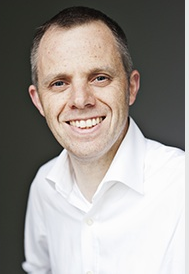
After more than 40 years of operation, DTVE is closing its doors and our website will no longer be updated daily. Thank you for all of your support.
Freesat to bring Freetime to smart TVs next year with OPAL
UK free-to-air satellite operator Freesat has launched an initiative to bring its Freetime connected TV platform to smart TVs, enabling viewers to access catch-up TV and other non-DVR Freetime features such as the backwards EPG without the need for a set-top box.
Freesat is already integrated with some Panasonic and Samsung TV, but without Freetime’s advanced features.
Speaking at the OTTtv World Summit this morning, Matthew Huntington, chief technology officer, Freesat, said traditional operators could be overly attached to the set-top box and needed to break free, providing the “operator as application”, especially to the TV set.
Freesat has developed Operator Privileged Application Layer (OPAL), which enables operators to provide a full set of services via connected TVs.
“Broadcasters and OTT providers can learn from each other, and the work we’ve done on OPAL is evidence of this,” he said.
“We want to get our services to more devices,” Huntington told DTVE. “We are already on Panasonic and Samsung TVs but it’s difficult to get [features including] the backwards EPG on Europe-wide TV models. We are proposing to provide the user experience for core TV services embedded in [TV manufacturers’] standard UIs, so that when you press the button on the remote control you go to something like the Freesat offer on a set-top.”
Huntington said that Freesat had invested in an API layer that would enable TV set providers to offer a “privileged application”, based on a relationship between the operator and the TV manufacturer, but with a common API.
Huntington told DTVE that Freesat would be using OPAL to offer its services in 2014 model TVs, with multiple TV manufacturers lined up.
Huntington also said that Freesat is open to the introduction of pay services on the platform.
“Free homes are just as interested in VoD services and just as interested in paying for those services as pay homes,” he told conference attendees. Freesat has implemented Microsoft PlayReady DRM to enable such services.
Huntington told conference attendees that OTT and linear TV can be allies rather than enemies, at least in the UK, with viewers using OTT to access a broader range of content at a time that suits them.
“Our Freetime hybrid platform supports the delivery of catch-up services over the top and we were the first YouTube HTML5 service to launch in Europe,” he said.
Huntington said that Freesat enables links to be built between linear TV and OTT services through its backwards EPG. He said that 20% of all VoD consumed on the platform was consumed via the backwards EPG.
TV set manufacturers are losing out to tablet providers for second screens in the home, said Huntington. “We need to address that. Streaming services are emerging and we want to integrate those into our offerings. The main thing for us is looking at gateway devices and that’s something I’ll be looking at,” he said.
Huntington said that linear TV still accounted for most viewing. He cited Thinkbox’s Screenlife: TV in Demand research looking at the behaviour of heavy VoD users, which showed that being deprived of linear TV had a bigger negative impact than being deprived of VoD.
“[Users’] journey typically started with live TV. The video diaries captured on this research showed a lot of blank TV screens because people didn’t know how to start,” said Huntington. “The research also showed how important live TV was to their social lives.” Teenagers switched off their mobile phones because they couldn’t engage with social media chat about popular shows, he said.



